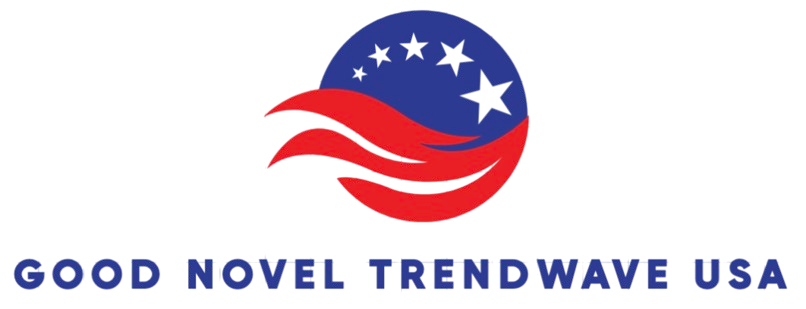Automating Client Onboarding: Streamlining the Process for Success
In today’s fast-paced business environment, automating client onboarding is not just a luxury but a necessity. Organizations that embrace automation in their onboarding processes can enhance efficiency, boost client satisfaction, and ultimately foster long-term relationships. When you streamline the onboarding journey, you reduce paperwork, minimize errors, and create a positive first impression for new clients.
🚀 Unlock New Opportunities! 🚀
Ready to boost your income, learn new skills, and achieve financial freedom? Explore these highly recommended offers selected just for you!
Fast Wealth
Discover HowLive Chat Jobs - You have to try this one
Start Chatting & Earn!Paid Online Writing Jobs - Get Paid To Do Simple Writing Jobs Online
Get Paid To Write!Cellphone Cash, Over $2 Million spent in testing!
Earn With Your Phone!Writeappreviews.com - Get Paid To Review Apps On Your Phone
Review Apps & Get Paid!InstaDoodle
Explore InstaDoodle!John Thornhills Ambassador Program - OVER 1 MILLION PAID TO JVs SO FAR
Join The Program!Get Paid to be a Virtual Online Assistant - Remote Work Jobs
Become A VA!The GPT Creator Club
Join The Club!Implementing an automated system for client onboarding starts with understanding what elements of the process can be enhanced. Here are key areas to focus on:
🚀 Unlock New Opportunities! 🚀
Ready to boost your income, learn new skills, and achieve financial freedom? Explore these highly recommended offers selected just for you!
Fast Wealth
Discover HowLive Chat Jobs - You have to try this one
Start Chatting & Earn!Paid Online Writing Jobs - Get Paid To Do Simple Writing Jobs Online
Get Paid To Write!Cellphone Cash, Over $2 Million spent in testing!
Earn With Your Phone!Writeappreviews.com - Get Paid To Review Apps On Your Phone
Review Apps & Get Paid!InstaDoodle
Explore InstaDoodle!John Thornhills Ambassador Program - OVER 1 MILLION PAID TO JVs SO FAR
Join The Program!Get Paid to be a Virtual Online Assistant - Remote Work Jobs
Become A VA!The GPT Creator Club
Join The Club!- Data Collection: Utilize online forms to collect client information. These forms can auto-populate fields based on user input, ensuring data accuracy while speeding up the collection process.
- Documentation Management: Digital solutions can help manage documents effectively. Clients can upload required files through a secure portal, reducing the need for physical paperwork.
- Task Automation: Automate follow-up tasks such as sending welcome emails, scheduling meetings, or assigning internal tasks. This ensures that nothing slips through the cracks.
- Integration with CRM Systems: Connect your onboarding solution to your existing Customer Relationship Management (CRM) system. This allows for seamless data transfer, ensuring that all client interactions are tracked.
Moreover, automating your client onboarding can personalize the experience for each client. Using automation tools, you can customize welcome messages, recommend specific services based on client needs, and provide tailored educational content. This personal touch makes clients feel valued and understood from the very beginning.
AI Automation Workflow Get today
Another significant advantage is that automation reduces the time it takes to onboard a client. Traditional onboarding can often stretch over several days or even weeks, as it involves back-and-forth communication and manual processes. However, with an automated system, you can cut down this time drastically. A well-crafted onboarding process can be completed in as little as a few hours, depending on the nature of your business.
As a business owner or manager, you might wonder how to get started with automating your onboarding process. Here are several actionable steps to help you implement automation effectively:
AI Automation Workflow Get today
- Assess Current Processes: Review your existing onboarding procedures. Identify bottlenecks, time-consuming tasks, and areas where errors frequently occur.
- Select the Right Tools: Research various onboarding software options that fit your requirements. Look for platforms that are user-friendly and provide vital features like document management, e-signatures, and integration with your CRM.
- Train Your Team: Ensure that your team understands how to use the new system. Provide training sessions to familiarize them with the automation tools.
- Keep Clients Informed: Notify your clients about the new onboarding process. Clear communication can ease any anxieties and improve their initial experience.
Feedback is crucial when streamlining the onboarding process. After implementing automation, solicit feedback from your clients to identify areas for improvement. You might consider sending a short survey to gather their thoughts on the ease of use and overall satisfaction with the process. This insight can offer invaluable information for future enhancements.
Furthermore, as your business grows, so should your onboarding process. Automating client onboarding is not a one-time task; it’s an ongoing process that needs constant evaluation. Regularly revisit your automation tools to ensure they are up-to-date with the latest technology and trends in your industry.
AI Automation Workflow Get today
By investing in the automation of client onboarding, you are not only saving time and resources but also setting your business up for success. A smooth and efficient onboarding process speaks volumes about your professionalism and attention to detail, encouraging clients to engage with your services long-term. Embrace the change, and watch your business thrive as you welcome clients on board with confidence and ease.
The Benefits of Efficient Client Onboarding for Business Growth
When it comes to business growth, the first impression matters a lot. Efficient client onboarding plays a crucial role in solidifying that impression. By streamlining the onboarding process, your business can ensure that new clients feel welcomed and valued right from the start. An effective onboarding strategy can significantly improve customer satisfaction, leading to enhanced retention rates.
Many businesses overlook the importance of client onboarding. They might think it’s just about paperwork or routine checks. However, a well-designed onboarding process can turn new clients into loyal customers and advocates for your brand. This not only drives revenue but also fosters a positive reputation in your industry.
AI Automation Workflow Get today
Enhancing Customer Satisfaction
One of the primary benefits of automating client onboarding is the increase in customer satisfaction. When you make the onboarding process smooth and engaging, clients will appreciate your effort. They will feel confident and understand how to effectively use your products or services. Happy clients are more likely to provide positive reviews and refer others to your business.
Building Strong Relationships
Another advantage is the opportunity to build stronger relationships with your clients. By investing time in understanding their needs during onboarding, you can tailor your communication and support accordingly. This personalized approach sets the stage for a long-term relationship based on trust and collaboration.
AI Automation Workflow Get today
Streamlining Processes
Automating client onboarding can significantly streamline your business processes. Consider these key benefits:
- Reduced Administrative Burden: Automation takes care of repetitive tasks and paperwork, freeing up your team to focus on more critical activities.
- Consistency: An automated system ensures that every client receives the same information and attention, eliminating variations caused by individual staff methods.
- Speed: With automation, clients can complete onboarding steps faster, allowing them to start using your services or products without unnecessary delay.
Improving Retention Rates
Efficient client onboarding has a direct impact on retention rates. Clients who have a positive onboarding experience are more likely to stick around for the long haul. According to studies, businesses that invest in strong onboarding processes experience a 20% increase in client retention. This means that not only do you save money on acquiring new clients, but you also maintain a consistent revenue stream.
AI Automation Workflow Get today
Increasing Revenue
When clients feel satisfied and supported from the get-go, they are more likely to explore additional services or products your company offers. This could lead to upselling and cross-selling opportunities that were not possible without a strong onboarding strategy. It’s not just about making a sale; it’s about creating a value-driven experience that encourages clients to invest more in your brand.
Gathering Feedback for Continuous Improvement
Another key advantage of automating client onboarding is the ability to easily gather feedback. Using surveys and analytics, you can continuously improve your onboarding process. Understanding your clients’ experiences will guide you in making adjustments that benefit future clients. This proactive approach demonstrates your commitment to exceptional service.
AI Automation Workflow Get today
Creating Brand Advocates
Last but not least, a seamless onboarding experience can turn clients into brand advocates. When clients are thrilled with their initial interaction, they’re more likely to recommend your business to their peers. This word-of-mouth marketing is invaluable and can significantly enhance your brand’s visibility and reputation. Engaging clients in a meaningful way enhances their perception of your company, building loyalty in a competitive market.
Optimizing client onboarding is more than just a formality. It opens doors to growth opportunities, enhances satisfaction, and builds lasting relationships. By automating this process, your business can reap substantial benefits that lead to enhanced client retention, increased revenue, and a strong competitive edge. Investing in effective onboarding is an investment in your company’s future success.
Tools and Software to Enhance Client Onboarding Automation
Automating client onboarding can transform the way businesses engage with their clients. It streamlines processes and enhances communication, making the experience smoother for both clients and service providers. Utilizing the right tools and software can elevate the onboarding experience. Here’s a look at some essential tools that can significantly enhance your client onboarding automation.
AI Automation Workflow Get today
Client Relationship Management (CRM) Software
CRM software is paramount in automating the onboarding process. These systems help track interactions with clients, manage data, and streamline communication. Popular CRMs like HubSpot and Salesforce offer features that allow for automated emails, reminder notifications, and follow-ups, keeping clients engaged at every stage of the onboarding process.
Consider looking for CRM software that provides:
AI Automation Workflow Get today
- Customizable onboarding workflows
- Integration with other tools
- Reporting features for insights on client progress
Document Automation Tools
With automation tools for documents, you can save time and reduce errors. Solutions like DocuSign and PandaDoc allow you to create, share, and sign documents digitally. This ensures that all necessary paperwork is completed efficiently and securely.
These tools come with benefits such as:
AI Automation Workflow Get today
- Templates for common documents, speeding up the creation process
- Integrated signature features, allowing for quick approvals
- Tracking capabilities to know when documents have been viewed and signed
Onboarding Software Solutions
Specialized onboarding software can take your automation to the next level. Tools like Trello, Monday.com, and Asana help manage tasks related to client onboarding. They allow teams to collaborate effectively and keep track of individual responsibilities.
These platforms offer:
AI Automation Workflow Get today
- Visual task management boards that provide clarity on the onboarding process
- Automated alerts for task deadlines
- Collaboration features that allow team members to comment and share files
Email Marketing Platforms
Email marketing platforms such as Mailchimp and ActiveCampaign can automate communication with new clients. You can set up welcome emails, onboarding sequences, and regular check-ins to make your clients feel valued and informed.
Look for features like:
AI Automation Workflow Get today
- Automated workflows that trigger based on client actions
- Email templates tailored to your branding
- Analytics to track open rates and engagement
Surveys and Feedback Tools
Listening to clients during onboarding helps you refine your process. Tools like SurveyMonkey and Typeform allow you to automate the gathering of feedback. You can send surveys after specific milestones to assess client satisfaction and identify areas for improvement.
This will help you:
AI Automation Workflow Get today
- Gain insights into client expectations
- Adjust processes based on real-time feedback
- Create a more personalized onboarding experience
Integration Tools
Integration tools like Zapier and Integromat enable different software applications to communicate with each other effortlessly. This means you can link your CRM, email marketing platform, and document automation tools to create a cohesive onboarding system.
Using integration tools can result in:
AI Automation Workflow Get today
- Automated data entry to reduce manual input
- Centralized client information accessible across various applications
- Streamlined processes that enhance productivity
Utilizing these tools can greatly improve client onboarding by making the process more efficient and user-friendly. By choosing the right mix of software, you can create a seamless experience that keeps clients engaged and satisfied from the very start of your relationship. Remember, the goal is to make clients feel valued and understood, setting a positive tone for future interactions.
Best Practices for Designing an Effective Onboarding Experience
Creating an effective onboarding experience is crucial for businesses looking to build strong relationships with clients from the very start. An organized onboarding process helps set clear expectations and fosters trust. Here are some best practices to design a seamless onboarding experience that will engage your clients and set the foundation for a successful partnership.
Understand Client Needs
Before you even begin designing your onboarding process, take the time to understand the specific needs of your clients. Engaging them in discussions about their expectations and pain points can offer insights that can shape your strategy. Consider using surveys or interviews to gather information.
AI Automation Workflow Get today
Define Clear Goals
Set clear objectives for your onboarding process. Knowing what you wish to achieve not only helps you stay focused but also allows your clients to understand what they can expect from you. For example:
- Ensure clients understand your products or services.
- Guide clients through initial setup procedures.
- Provide training resources to enhance product usability.
Streamline the Process
A well-structured onboarding process minimizes friction. Break down the onboarding journey into manageable steps. Here are some key components to include:
AI Automation Workflow Get today
- Welcome Messages: Send a personalized welcome email that introduces your team and outlines the next steps.
- Interactive Tutorials: Use explainer videos or step-by-step guides to walk clients through your services.
- Documentation: Provide easy access to FAQs and help documents that can answer common questions.
Utilize Technology
Leveraging technology can significantly enhance the onboarding experience. Consider implementing an onboarding software solution that allows for automation of repetitive tasks. Here are a few tech tools that can help:
- CRM Systems: Use Customer Relationship Management software to track client interactions and store relevant information.
- Automated Communication: Utilize email automation for follow-ups, reminders, and important updates.
- Online Scheduling: Enable clients to schedule onboarding sessions with your team easily.
Provide Personalized Support
Personalization can significantly boost client satisfaction. Make it a point to offer dedicated support during the onboarding phase. This could include assigning a specific team member to assist each client or conducting personalized training sessions tailored to their needs.
AI Automation Workflow Get today
Set Checkpoints
Throughout the onboarding process, set checkpoints to evaluate progress. Regular check-ins allow you to address any concerns or challenges your client may be experiencing. Here’s how to implement effective checkpoints:
- Weekly Progress Reviews: Schedule weekly meetings to discuss challenges and advancements.
- Surveys: Send out brief surveys after key milestones to capture feedback.
- Feedback Sessions: Organize sessions focused exclusively on gathering your client’s input on the onboarding experience.
Encourage Community Engagement
Fostering a community around your product enhances the onboarding experience. Create forums, social media groups, or chat rooms where new clients can connect with each other and share insights. This social interaction can immensely add to their comfort and confidence in using your services.
AI Automation Workflow Get today
Measure and Optimize
Continually measure the effectiveness of your onboarding process. Collect data on client satisfaction, completion rates, and time spent in onboarding. Use analytics tools to gain insights and identify areas of improvement. Regularly update your onboarding methods based on feedback and evolving client needs.
By understanding your clients’ needs, streamlining the process, utilizing technology, providing personalized support, setting checkpoints, encouraging community engagement, and continually optimizing, you can create an effective onboarding experience. A well-designed onboarding process not only engages clients but also lays the groundwork for lasting relationships, ensuring client loyalty and satisfaction for years to come.
Common Challenges in Client Onboarding and How to Overcome Them
Client onboarding can set the tone for the entire relationship between your business and your clients. However, several challenges often crop up during this process, hindering the experience for both parties. Understanding these challenges and implementing effective solutions can make your onboarding as smooth as possible.
AI Automation Workflow Get today
Communication Breakdown
One of the primary challenges in client onboarding is communication. When expectations are unclear, it can lead to misunderstandings, frustration, and even lost business. Clients may not fully grasp the services you offer or the procedures involved in getting started. To overcome this hurdle:
- Establish clear communication channels. Use tools like email, chat, or onboarding software to facilitate easy exchanges.
- Set the expectation upfront. Clearly outline your process, timeline, and what information you need from the client.
- Regular follow-ups can keep both parties informed. Schedule check-ins to address any questions that may arise.
Time-Consuming Processes
Another common challenge in onboarding is the time it consumes. Lengthy forms, excessive documentation, or drawn-out meetings can turn clients off. Simplifying this process is key:
AI Automation Workflow Get today
- Utilize digital tools and software to expedite data collection. Online forms can often be filled out quickly and submitted directly.
- Automate repetitive tasks where possible. Use CRM systems that can streamline processes and save everyone time.
- Focus on gathering essential information during the onboarding phase. Avoid overload by prioritizing what’s necessary for the initial stages.
Resistance to Change
Clients may resist the changes that come with your services. New tools and processes can be intimidating, especially for less tech-savvy individuals. To ease this transition:
- Provide training sessions or tutorials. Tailor these to match the client’s skill level for better engagement.
- Highlight the benefits of the new processes. Show clients how these tools will save their time and improve efficiency in the long run.
- Be patient and offer support. Reassure clients that you’re just a call or email away for any help they may need.
Inadequate Resource Allocation
Another issue often faced during client onboarding is insufficient resources. This can lead to delays and confusion. By adequately planning your resources, you can counteract this problem:
AI Automation Workflow Get today
- Evaluate your current workflow. Identify areas where resources may be lacking and allocate additional staff or tools where needed.
- Implement a dedicated onboarding team. Having a group specifically focused on onboarding will enhance attention to detail and client engagement.
- Set realistic timelines based on available resources. Don’t promise what you can’t deliver within your resource constraints.
Inconsistent Experience
Providing inconsistency during onboarding can affect client trust. If different clients experience varied processes, it can lead to dissatisfaction. To maintain effectiveness across the board:
- Create standardized onboarding procedures. Document every step of your process to ensure uniformity.
- Train your team continuously. Regular training ensures every team member maintains the same quality of service.
- Encourage feedback from clients. Use this information to make improvements and adjustments to your processes.
Technology Issues
Relying on technology can present unique challenges, such as software glitches and integration problems. Here’s how to manage these risks:
AI Automation Workflow Get today
- Invest in reliable onboarding software. Research solutions that have a solid track record and offer robust support.
- Conduct regular tech audits. Ensure that your systems are updated and functioning properly to avoid downtime during onboarding.
- Have an alternate plan ready. If your primary system fails, having a backup process in place can prevent delays.
By recognizing these common challenges in client onboarding and developing strategies to overcome them, you can create a smoother, more effective process. When clients feel valued and supported from the outset, it establishes a positive foundation for your ongoing relationship.
Conclusion
Automating client onboarding is not just about efficiency; it’s a transformative strategy that can significantly impact your business growth. By streamlining the onboarding process, you can create a smoother experience for both your clients and your team. Efficient onboarding helps establish strong relationships from the start, leading to enhanced client satisfaction, loyalty, and ultimately, increased revenue.
Utilizing the right tools and software is crucial to enhancing your onboarding automation efforts. These technologies allow you to keep track of important information, communicate seamlessly, and provide clients with the resources they need at their fingertips. Implementing best practices—from crafting personalized welcome messages to setting clear expectations—can help you design a truly effective onboarding experience that resonates with clients and sets the stage for success.
AI Automation Workflow Get today
However, challenges are inevitable in any process, and client onboarding is no exception. Common obstacles like insufficient communication or information overload can hinder the experience. By proactively identifying these challenges and employing strategic solutions, you can turn potential roadblocks into opportunities for growth and development.
Ultimately, automating client onboarding is an investment in your future. It empowers you to nurture relationships more effectively and fosters an environment where both your business and your clients can thrive. By embracing automation and continuously refining your approach, you not only simplify your processes but also position your business for long-term success in an increasingly competitive landscape. Engaging clients from day one equips you with the tools needed to nurture lasting relationships and drive mutual success.




